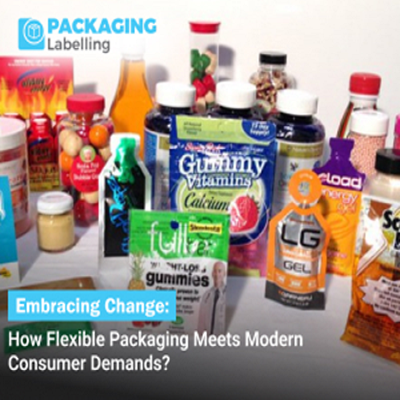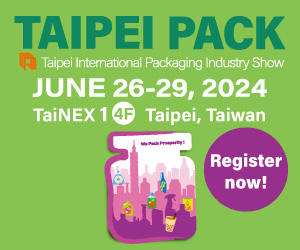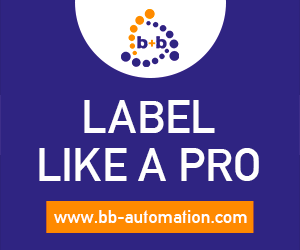Articles
Embracing Change: How Flexible Packaging Meets Modern Consumer Demands?

In a rapidly evolving consumer landscape, the packaging industry is undergoing a transformation to cater to the ever-changing preferences of modern shoppers. Flexible packaging, with its versatile and innovative design, has emerged as a frontrunner in meeting these dynamic demands. Let's explore how this adaptable packaging solution is revolutionizing the market.
Adaptability to Diverse Consumer Lifestyles
Flexible packaging is particularly advantageous due to its capacity to cater to diverse consumer lifestyles. Given the growing number of people with hectic, on-the-go schedules, convenience has emerged as a critical consideration. This type of packaging provides lightweight, portable, and user-friendly options that complement the fast-paced lifestyles of contemporary consumers. Whether it's resealable pouches for snacks or stand-up pouches for beverages, the convenience aspect continues to be a major driving factor in its increasing popularity. Its adaptability spans across various product categories, encompassing food, beverages, personal care items, and even pharmaceuticals, thereby making it a versatile choice for multiple industries.
| Also Read: Flexible Packaging Dynamics: Trends, Challenges, and Opportunities |
Preservation and Sustainability: A Delicate Balance
While preserving product freshness and extending shelf life is crucial, the contemporary consumer is also becoming more environmentally conscious. Flexible packaging strikes a delicate balance by providing efficient protection for goods while minimizing environmental impact. The industry has witnessed a surge in the use of recyclable and biodegradable materials, addressing the mounting concern for sustainable practices. Manufacturers are actively embracing eco-friendly materials and innovative designs, ensuring that convenience does not come at the cost of environmental responsibility. This shift toward sustainable practices has not only appealed to eco-conscious consumers but has also contributed to the positive brand image of companies adopting these practices, leading to increased customer loyalty and goodwill.
Customization for Brand Appeal
In today's highly competitive market, attracting consumer attention hinges on the appeal of the brand. Flexible packaging provides ample opportunities for customization, empowering brands to craft visually captivating and distinctive designs that strike a chord with their desired audience. Whether it's through dynamic graphics, engaging features, or tailored messaging, brands can forge deeper connections with consumers, fostering loyalty and familiarity. Additionally, the adaptable design options facilitate swift adjustments to keep pace with shifting market trends, guaranteeing product relevance and attractiveness. This unique customization capability enables brands to shine amidst crowded shelves, setting their products apart and driving up both sales and brand visibility.
Enhanced Product Protection and Safety
Both manufacturers and consumers prioritize product protection and safety, making it a pivotal concern. Flexible packaging, integrated with advanced barrier technologies, ensures the safety and integrity of products by shielding them from external elements like moisture, light, and oxygen. This heightened level of protection not only extends the shelf life of products but also cultivates consumer confidence by guaranteeing the quality and safety of the packaged items. This aspect becomes particularly critical in sectors such as pharmaceuticals and food, where preserving product integrity is vital for ensuring consumer well-being. Additionally, the inclusion of tamper-evident features further reinforces consumer trust in the product's safety, contributing to the establishment of trust and credibility for the brand.
Embracing Digital Integration
In response to the digital revolution, the packaging industry has integrated digital solutions into its offerings, aligning with the evolving consumer behavior. Flexible packaging has readily adopted this trend, incorporating technologies like QR codes and augmented reality to facilitate interactive and captivating experiences for consumers. These digital incorporations serve a dual purpose, offering essential product information while also creating immersive and personalized interactions, strengthening the bond between brands and their customer base. Through the simple act of scanning a QR code, consumers gain access to comprehensive product details, nutritional insights, and engaging multimedia content, enriching their overall product engagement. These interactive elements not only captivate consumers but also provide valuable data to brands about consumer preferences and behaviors, empowering them to fine-tune their marketing strategies accordingly.
Looking Ahead: The Future of Flexible Packaging
As consumer preferences undergo continual evolution, the flexible packaging industry stands as a vanguard of innovation, adeptly adjusting to cater to the demands of the ever-changing market. With a dedicated emphasis on sustainability, customization, product protection, and digital integration, the future of flexible packaging appears exceedingly bright, heralding an ongoing transformation in the realms of product packaging, marketing, and consumption. Anticipated advancements include the incorporation of cutting-edge technologies, such as intelligent packaging capable of monitoring product freshness and delivering real-time information to consumers, poised to ensure that flexible packaging consistently meets the dynamic needs of today's consumers.
In summary, flexible packaging has brought about a significant transformation in the packaging sector, catering effectively to the ever-changing demands and preferences of today's consumers. Its ability to adapt, commitment to sustainability, customizable options, and integration of digital solutions have positioned it as a leading force in shaping the future of consumer packaging. As the industry continues to progress, flexible packaging is expected to remain a critical component in delivering convenience, safety, and innovation to consumers worldwide. The ongoing advancements in the field reflect the industry's dedication to meeting consumer requirements while adhering to sustainable and eco-friendly practices, solidifying flexible packaging as an essential part of the modern consumer experience.









